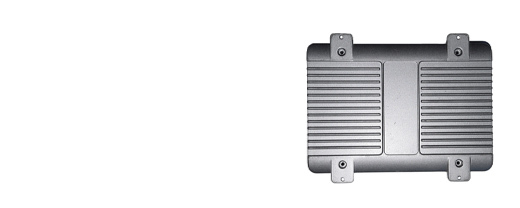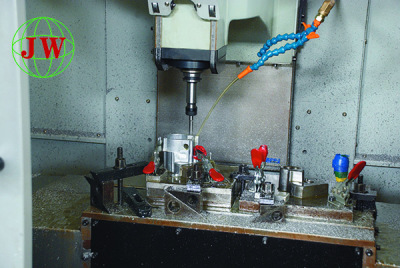
Aluminum Alloy Automotive Die-Casting Parts: Driving the Future of Lightweight Mobility
2025-08-12 15:25
In the rapidly evolving automotive industry, aluminum alloy automotive die-casting partshave emerged as a cornerstone of innovation, enabling automakers to balance performance, efficiency, and sustainability. These precision-engineered components, ranging from engine brackets to chassis components, are reshaping vehicle design by leveraging the unique benefits of aluminum die-casting—a technology that combines strength, lightness, and cost-effectiveness.
The Rise of Aluminum in Automotive Manufacturing
Aluminum alloy has become the material of choice for modern automakers, replacing traditional steel in key components to reduce vehicle weight. A typical car contains 150–200kg of aluminum parts, with die-cast components accounting for a growing share. This shift is driven by stringent global emissions regulations: every 10% reduction in vehicle weight improves fuel efficiency by 6–8%, making aluminum die-casting parts critical for meeting carbon neutrality goals.
Automotive die-casting parts such as transmission housings, steering knuckles, and battery enclosures (for electric vehicles) showcase aluminum’s versatility. For example, Tesla’s Gigacasting technology uses massive die-cast aluminum parts to replace hundreds of smaller components, streamlining production and cutting vehicle weight by 30% compared to steel alternatives.
How Die-Casting Transforms Automotive Components
The die-casting process—injecting molten aluminum alloy (often A380 or ADC12) into steel molds under high pressure—delivers unmatched advantages for automotive parts:
Complex Geometry: Die-casting creates intricate shapes with internal channels, threads, and thin walls (as low as 1.5mm) that machining or forging cannot achieve. This allows engineers to integrate multiple functions into a single part, such as a die-cast engine bracket that supports both the engine and wiring harnesses.
Strength & Durability: High-pressure casting eliminates porosity, giving aluminum die-cast partstensile strength up to 320 MPa—comparable to mild steel but with 60% less weight. These parts withstand extreme temperatures, vibrations, and corrosion, making them ideal for underhood and chassis applications.
Cost Efficiency: Mass production of automotive die-casting parts is feasible thanks to durable steel molds that produce 100,000+ units. This reduces per-unit costs by 20–30% compared to welded steel assemblies, a key factor for budget-conscious automakers.
Key Applications in Modern Vehicles
Aluminum alloy automotive die-casting parts are integral to both internal combustion engine (ICE) and electric vehicles (EVs):
EV Batteries: Die-cast aluminum enclosures protect battery packs from impact and moisture while dissipating heat—critical for EV safety and performance. Companies like BYD use die-cast battery frames that reduce weight by 40% versus steel, extending driving range by 10–15%.
Chassis & Suspension: Die-cast control arms and knuckles improve handling by reducing unsprung weight, enhancing ride comfort. Luxury brands like BMW and Audi rely on these parts to balance sportiness and efficiency.
Powertrain Components: Transmission cases and oil pans made via die-casting withstand high torque and temperatures, ensuring long-term reliability. Their smooth surfaces also reduce friction, boosting engine efficiency.
Innovation in Die-Casting Technology
Advancements in die-casting are expanding the possibilities for automotive parts. Mega-casting machines, capable of producing parts weighing up to 80kg, are revolutionizing EV manufacturing. These machines reduce the number of parts in a car’s underbody from 70+ to just 1–2, cutting assembly time by 50%.
3D printing is also transforming mold design, allowing rapid prototyping of die-cast parts in weeks instead of months. This accelerates testing for crashworthiness and thermal performance, enabling faster vehicle launches. Additionally, AI-driven process monitoring optimizes pressure and temperature in real time, reducing defects to less than 0.5%—a game-changer for safety-critical components.
Market Growth & Sustainability
The global automotive aluminum die-casting market—valued at $58 billion in 2023—is projected to grow at 8.5% annually through 2030, fueled by EV adoption. Asia-Pacific leads this growth, with China’s BYD and India’s Tata Motors ramping up die-cast part usage.
Sustainability is a key driver: aluminum is 100% recyclable, and recycled alloy uses 95% less energy than primary production. Automakers like Ford now use 30% recycled aluminum in die-cast parts, aligning with circular economy goals.
Conclusion
Aluminum alloy automotive die-casting parts are more than just components—they are enablers of the automotive industry’s future. By combining lightweight design, strength, and sustainability, these parts help automakers meet emissions targets, improve EV range, and streamline production. As technology advances, die-casting will continue to push boundaries, proving that the cars of tomorrow are built on the precision of aluminum die-cast parts.
Get the latest price? We'll respond as soon as possible(within 12 hours)












